Do kayak paddles float? It’s a crucial question for any kayaker, whether you’re a seasoned professional or just starting out. The short answer is: yes, most kayak paddles do float. But let’s delve deeper into why that is and the factors that can affect paddles’ buoyancy.
When you’re out on the water, few things are more frustrating than losing a paddle. It may sound trivial, but dropping a paddle in the water could mean the difference between finishing your adventure or being stranded. That’s why most paddle manufacturers have made it a priority to design paddles that float. They usually achieve this by using lightweight materials like plastic, foam, or aluminum that create enough buoyancy to keep the paddle afloat.
But it’s important to note that not all kayak paddles are created equal. Some brands and models might not float as well as others, especially as they become worn or damaged. Over time, the materials used in the construction of the paddle may degrade or lose some of their buoyancy properties. Also, heavier paddles made of wood or other denser materials might not float as effectively.
In these cases, it’s essential to inspect and maintain your paddle regularly and consider investing in a reliable floating paddle leash for added security. That way, you can paddle with confidence, knowing your paddle isn’t going anywhere but with you.
Contents
Contents
Understanding Kayak Paddle Buoyancy
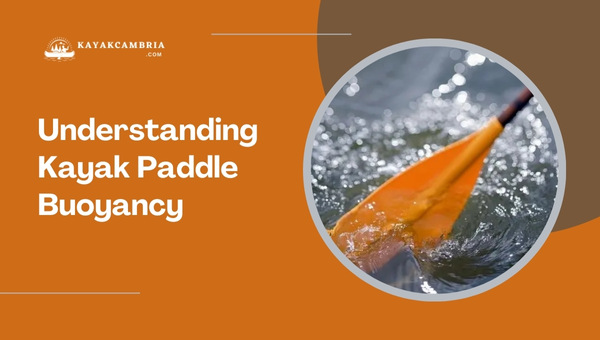
A common question among kayaking enthusiasts is, “Do kayak paddles float?” To answer this, let’s dive into the concept of buoyancy and what factors contribute to it.
When I first started kayaking, I wondered if my paddle would float if I accidentally dropped it in the water. It’s essential to understand kayak paddle buoyancy to avoid losing your paddle. In general, kayak paddles do float. However, several factors can affect their buoyancy, such as the paddle material, design, and the water’s salinity.
Kayak paddles come in various materials, each with its effect on buoyancy:
- Wooden paddles: These naturally buoyant paddles have a warm feel and flex, making them ideal for leisurely paddling. With proper maintenance, wooden paddles can last for many years.
- Fiberglass paddles: Lightweight and strong, fiberglass paddles are commonly used by recreational and touring kayakers. They have a good floatation capacity and are more affordable than carbon fiber paddles.
- Carbon fiber paddles: Known for their lightweight and stiffness, carbon fiber paddles are popular among competitive kayakers who prioritize performance. Carbon fiber paddles show excellent buoyancy but can be more expensive than other options.
- Aluminum paddles: Typically paired with plastic blades, aluminum paddles are a cost-effective choice, especially for beginners. However, they may not float as well as their wooden or carbon fiber counterparts.
Paddle design also plays a role in buoyancy:
- Blade shape: Large blades with more surface area will typically float better than narrow blades. Wider blades can displace more water, helping to keep the paddle afloat.
- Hollow shaft: Some paddles are designed with hollow shafts, which can help improve buoyancy. This design allows for trapped air inside, contributing to the paddle’s floatation.
Lastly, water salinity can impact paddle buoyancy. If you find yourself kayaking in saltwater, you’ll be glad to know that saltwater is denser than freshwater, providing more lift to objects, including kayak paddles. So, paddles will generally float better in saltwater compared to freshwater.
What Is The Purpose Of A Paddle Float?
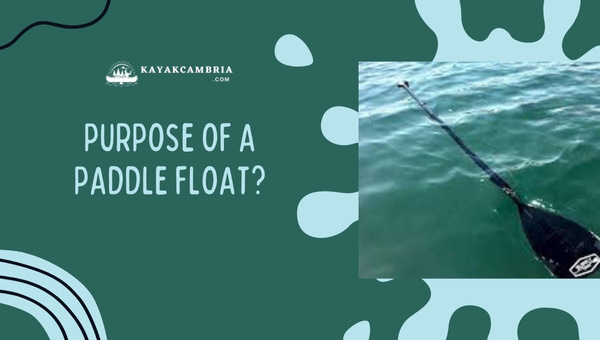
A paddle float serves as an essential piece of safety equipment for all kayakers, regardless of their skill levels. It is designed to provide additional buoyancy and stability during water-based scenarios, such as recovering from a capsize or performing a self-rescue. By understanding the main purposes of a paddle float, one can maximize its benefits and enhance their overall kayaking experience.
- Self-Rescue Aid: One of the primary functions of a paddle float is to assist in self-rescue situations. When a kayak capsizes or a kayaker falls out of its boat, a paddle float can be inflated and attached to one end of the kayak paddle. This creates an outrigger-like support that the kayaker can use to re-enter their boat, using leverage to help get back on board safely.
- Added Stability: A paddle float provides additional stability, especially for novice kayakers who may be prone to tipping over. By attaching the float to the paddle before setting out on the water, inexperienced paddlers can gain extra confidence and be more comfortable in their kayak.
- Rolling Assistance: Experienced kayakers often practice rolling their kayak to improve their skills and become more comfortable with capsizing. A paddle float can be used as a training tool, providing extra buoyancy for those learning to roll. As the kayaker gains proficiency, the paddle float can be removed or deflated for increased difficulty.
- Brace Support: In rough or choppy water conditions, a kayak paddle with a paddle float can be used as a brace to help maintain balance and prevent capsizing. By extending the paddle out to the side with the float end touching the water, the kayaker can lean on the paddle for stability and maneuver through difficult water conditions more easily.
- Emergency Flotation Device: In case of an emergency, a paddle float can serve as a makeshift personal flotation device. While it is not designed to replace a life vest, the inflated float can provide some buoyancy for a paddler who may have lost their vest or needs to stay afloat in the water until help arrives.
Factors Affecting Paddle Floatation

Let’s discuss the factors affecting paddle floatation.
1. Material
Firstly, the material of the paddle plays a significant role in determining whether it will float. Kayak paddles are generally made of three main materials:
- Wood: Wooden paddles are typically heavier, but they can float due to the naturally buoyant properties of wood.
- Fiberglass: Fiberglass paddles are lightweight and have a moderate buoyancy, making them likely to float as well.
- Carbon fiber: These paddles are ultra-lightweight and have low buoyancy, meaning they might not float or will float just below the water’s surface.
2. Design
Another factor to consider is the design of the paddle. Some paddles are specifically designed to float, while others are not. For instance, paddles with a hollow shaft or buoyant material inside the blades will usually float, while solid, denser paddles might not.
Buoyancy aids can also be added to kayak paddles to ensure that they float. Some options include:
- Paddle floats: These are small inflatable devices attached to the paddle blade, providing added buoyancy.
- Paddle leashes: Although not technically a buoyancy aid, a paddle leash secures the paddle to the kayak, preventing it from floating away.
3. Condition
In addition to material and design, a paddle’s condition can influence its ability to float. A paddle with cracks or damage may take on water, causing it to sink. So, it’s crucial to inspect and maintain your paddle regularly to prevent any issues that may affect its floatation.
4. Environmental Factors
Lastly, environmental factors can impact paddle floatation as well. Factors such as water temperature, currents, and saltwater versus freshwater may influence the buoyancy of a paddle. For example, paddles are more buoyant in saltwater due to their increased density compared to freshwater.
By considering these variables, you can make an informed decision to maximize the floatation potential of your kayak paddle.
Which Is The Best Way To Make Kayak Paddles Float?
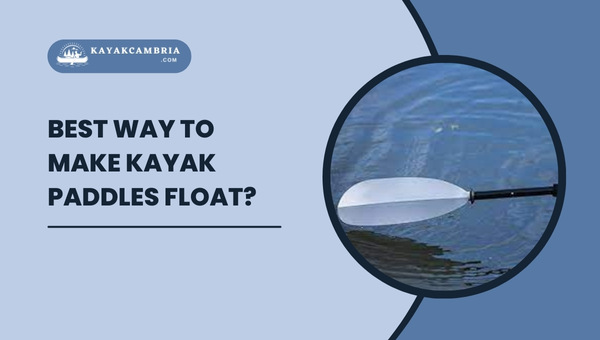
Even though most kayak paddles naturally float to some extent, it’s always beneficial to take extra steps to make them float better. This will minimize the risk of losing your paddle during a kayaking session, especially if you accidentally drop it in fast-flowing water. Here are some ways to ensure your kayak paddles float better:
- Choose a paddle with buoyant materials: Kayak paddles made from buoyant materials, such as wooden or foam-core blades, will float better than those made from less buoyant materials. When shopping for a paddle, pay attention to its weight and the materials used in its construction as lighter ones typically float better.
- Use paddle floats: Paddle floats are inflatable flotation devices designed specifically for kayaking paddles. When attached to the blade of your paddle, they provide enhanced buoyancy to make it difficult for your paddle to sink. Paddle floats are lightweight, portable, and can either be inflatable or made of foam.
- Add reflective tape: Although reflective tape will not aid in flotation, it can help increase visibility. By applying brightly colored or reflective tape to your kayak paddle, you make it easier to locate on the water’s surface.
- Invest in a paddle leash: A paddle leash is a useful accessory that connects your paddle to your kayak. While it does not directly make your paddle float, it ensures that you won’t lose your paddle, even if you accidentally drop it in the water. Paddle leashes come in various styles, such as coiled or straightforward bungee cords, and they can be easily attached to your kayak.
- DIY flotation: If you’re feeling creative, you can design your flotation solution for your paddle. For instance, you can use waterproof, closed-cell foam or pool noodles, cutting them into suitable pieces, and attaching them to the shaft of your paddle using zip ties or strong adhesive.
By incorporating any or a combination of these methods, you can improve the flotation capabilities of your kayak paddle, making your kayaking experience safer and more enjoyable. Remember, prevention is always better than regret, so investing in a few of these suggestions can save you time and money in the long run.
Choosing The Right Paddle for You
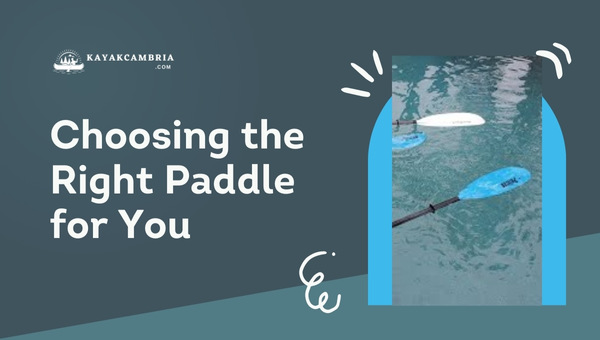
When it comes to kayaking, the paddle you choose can significantly impact your experience on the water. Since it’s essential to consider other factors as well while selecting the perfect paddle for your needs. Let’s dive into a few key points to consider:
First, you need to determine the proper length for your paddle. This decision depends on your kayaking style, the width of your kayak, and your height. Here’s a rough guide to choosing the right paddle length:
| Kayak Width (in) | Paddler Height (ft) | Suggested Paddle Length (cm) |
| less than 23 | 5’0” – 5’5” | 210 – 220 |
| 23-27 | 5’6″ – 6’0” | 220 – 230 |
| 28-32 | taller than 6′ | 230 – 240 |
Next, consider the paddle materials. There are various options available, each with its pros and cons:
- Aluminum – Affordable and durable, but heavier than other types.
- Fiberglass – Lightweight and sturdy, with a bit more flex, suitable for long-distance paddling.
- Carbon Fiber – The lightest and strongest option, excellent for performance but comes at a higher cost.
Another crucial aspect is the paddle blade design. Some common choices include:
- Flat blades: Ideal for beginners, offering excellent stability and control during the paddling process.
- Dihedral blades: A central ridge provides a smoother, more efficient stroke, ideal for recreational paddlers.
- Asymmetrical blades: Optimized for advanced paddlers seeking high performance in their strokes, with reduced flutter and improved power.
Remember, finding the right paddle is all about understanding your needs and preferences, so put some thought into it.
What About Kayak Paddle Leashes?

As we’ve established that kayak paddles may not always float, it’s essential to consider additional ways of securing them to your kayak to prevent loss. One such solution is the kayak paddle leash. The paddle leash is a simple yet effective accessory that ensures your paddle stays connected to your kayak, whether it floats or not.
Types of Kayak Paddle Leashes
There are generally two types of paddle leashes available:
- Coiled: Coiled paddle leashes are made from elastic material and can stretch up to multiple feet. These are ideal for kayak fishing, as the coils prevent the leash from getting tangled with your equipment or interfering with your paddling.
- Straight: Straight paddle leashes are made from non-elastic materials like nylon webbing or rope. While they’re durable and functional, they can be more prone to tangling compared to coiled leashes. These work best for recreational kayaking and touring, where there’s lesser chance of entanglement.
Benefits of Kayak Paddle Leashes
- Security: The primary advantage of using a paddle leash is the added security. Not only do they prevent you from losing your paddle in case it goes overboard, but they also keep your paddle within reach at all times. This can be especially useful in rough waters or during flips, where you need to easily access your paddle for safety.
- Convenience: A paddle leash adds convenience to your kayaking experience. While fishing or taking a break, you can stash your paddle to the side without worrying about it floating away.
- Peace of Mind: Knowing that your paddle is securely attached to your kayak, whether it’s a floating or non-floating type, provides peace of mind. You can focus on enjoying your kayaking experience without constantly worrying about the whereabouts of your paddle.
- Tips for Using a Kayak Paddle Leash
- Proper Placement: Attach one end of the leash to your paddle, and the other end to the kayak. Consider placing the leash attachment point on the kayak near your seat, allowing for easy reach and minimal interference during paddling.
- Keeping it Short: Choose the right length for your paddle leash. Having a long leash could lead to more tangling and complications, while a shorter leash keeps the paddle closer and within easy reach.
- Test it Out: Before venturing out into open water, test your leash to ensure it works properly with your setup. Make sure it doesn’t tangle or impede your paddling movements.
Whether your kayak paddle floats or not, investing in a high-quality kayak paddle leash is an excellent accessory to ensure you don’t lose your paddle during your adventures. Remember to choose the right type of leash for your specific needs, and make sure it doesn’t affect your overall kayaking experience.
Canoe And Kayak Paddles: What’s The Difference?
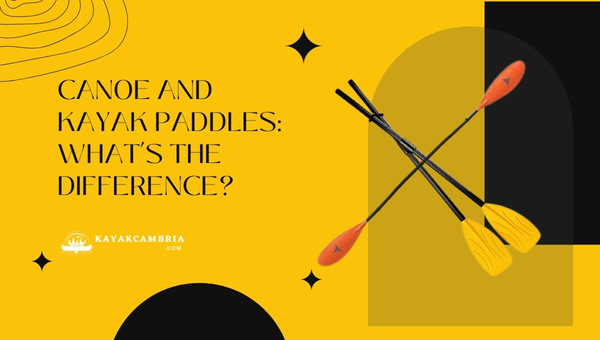
While both canoes and kayaks are designed for water activities, the key differences in their design and function extend to their paddles as well. Understanding these differences will help you make a better choice when selecting equipment for your water recreation.
- Blade Shape: Canoe paddles typically feature a teardrop or oval-shaped blade, which is designed for a more vertical stroke. This allows the paddler to move the canoe forward with greater efficiency. On the other hand, kayak paddles feature a more asymmetrical blade shape, improving resistance and allowing for a more horizontal stroke. The shape of the blade is crucial for maintaining balance and control in the water.
- Length: Kayak paddles are generally longer than canoe paddles due to the wider beam of kayaks. The ideal length of a paddle depends on various factors, such as your height, paddling style, and the kayak’s width. Canoe paddles, being shorter, allow for a more upright paddling position, whereas kayak paddles require a slightly leaned forward position.
- Shaft Design: Kayak paddles usually have a double-bladed design, which means they have a paddle blade on each end of the shaft. This allows kayakers to alternate between left and right-hand strokes, propelling the kayak forward with greater ease. Canoe paddles, however, are single-bladed, and paddlers must switch the paddle from side to side or develop a J-stroke technique to maintain a straight course.
- Materials: Both canoe and kayak paddles can be made from various materials, such as wood, aluminum, fiberglass, carbon fiber, or plastic. However, they may vary in terms of durability, weight, performance, and price. As a general rule, heavier materials like wood and aluminum are more affordable, while lightweight options like carbon fiber are more expensive but offer better performance.
- Grip: The grip on canoe paddles is typically T-shaped or pear-shaped, providing a comfortable and secure hold for the paddler. This design offers better control during each stroke, crucial for maneuvering the canoe. Kayak paddle grips are more straightforward, as the shaft is held with both hands directly, and the paddler’s fingers wrap around the shaft for a secure hold.
When choosing between a canoe and a kayak paddle, understanding their differences can significantly impact your overall paddling experience. Remember to consider factors such as blade shape, length, shaft design, materials, and grip when making your decision.
Final Thoughts on Kayak Paddles Floating
Throughout this article, we’ve discussed whether kayak paddles float or not. To recap, let’s revisit the key points:
- Most kayak paddles indeed float due to their lightweight materials and design. The common materials used in kayak paddles are aluminum, fiberglass, and carbon fiber, all of which help paddles maintain buoyancy.
- Although the majority of paddle types will float, it’s essential to note that certain heavy-duty or specialized paddles may not float as easily. Always check the specifications of the paddles before purchasing to ensure they have the desired buoyancy for your needs.
By keeping these points in mind, you’re sure to select the appropriate paddle for your kayaking adventures. The fact that most kayak paddles float can offer peace of mind while you’re out on the water, ensuring your paddling experience remains enjoyable and stress-free. Happy paddling!

